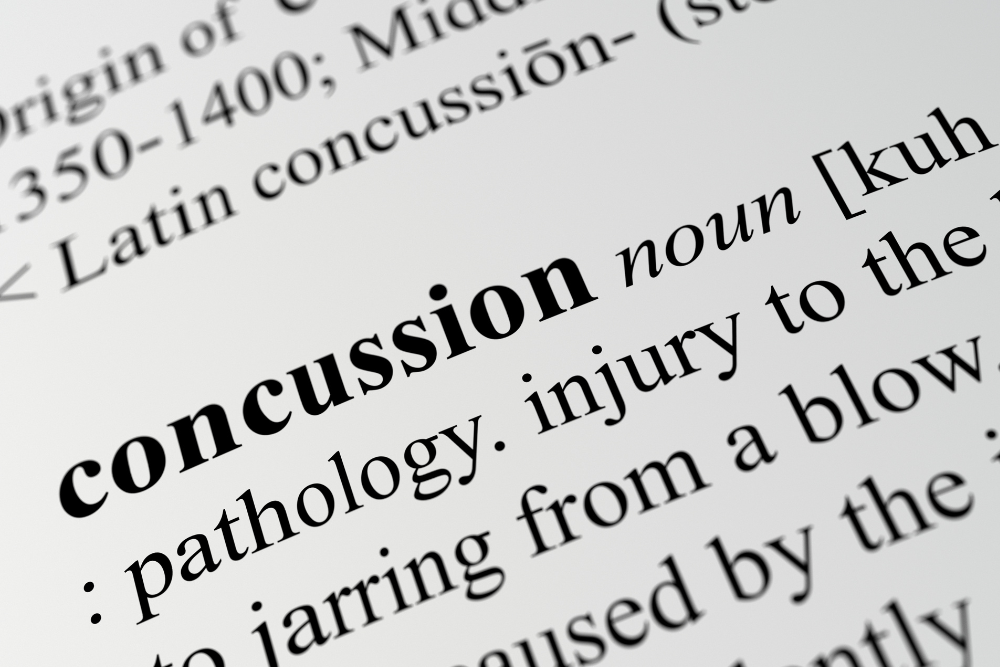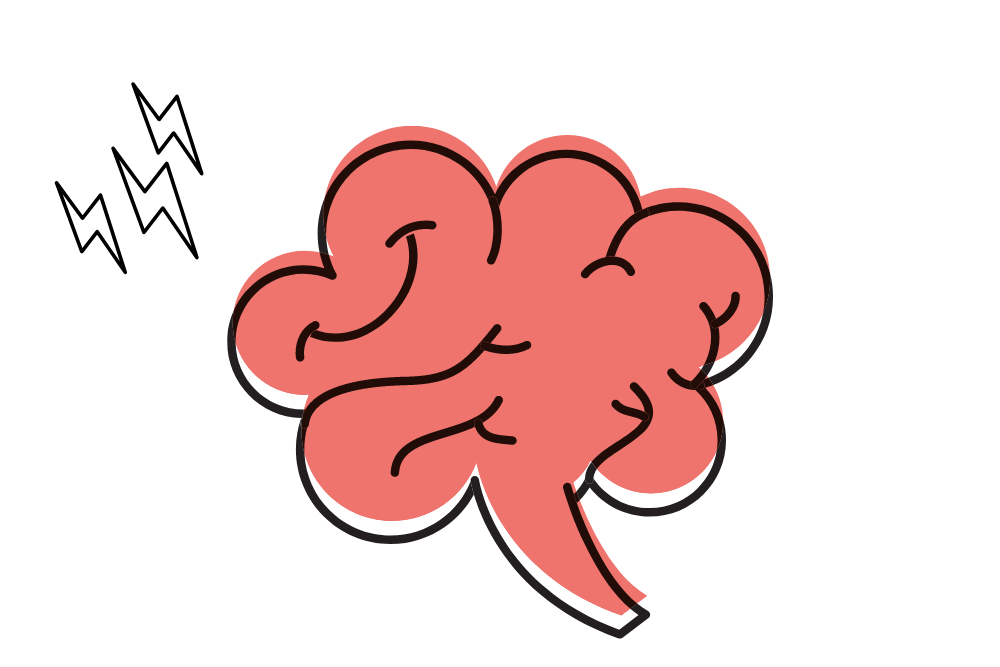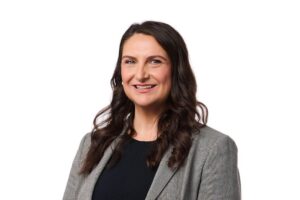WORDS: Dr Mark Ralfe, FRACGP DRANZCOG DCH MSportsMed
Before coming back to Adelaide to work as a sports and exercise medicine doctor, my wife and I were lucky enough to work in South Australia’s mid north town of Balaklava while finishing off my training in General Practice. Our daughter in year 2 had a brilliant year (she’s now 29) and I saw first-hand the enormous benefit of children being involved in sport. Developing friends for life, discovering inspiring adult mentors, experiencing lessons of resilience, hard work and fun are opportunities we are so lucky to have in a country like Australia. Yet unfortunately injuries happen and one of those injuries getting a lot of press lately is concussion.
Concussion in children and teens
Concussion is a huge and complex topic that’s getting much more media coverage over the last few years. A near billion-dollar class action by NFL players in 2011 and Concussion the movie in 2013 started popular interest. A 2016 Australian Family Physician journal states that traumatic brain injury “is one of the most common causes of neurological morbidity and is more common in childhood and adolescence than at any other time of life”. USA data estimates 2 out of 3 of all sports concussions happen to the 5 to 18-year-olds and around 30% of under 13-year-olds in Australia have had a concussion.
What is concussion?
Concussion is a transient injury to the brain caused either by a direct blow of a jolt to the body transmitted to the head. This jolt causes a cascade of biochemical reactions in the developing brain causing electrolytes to flood in and out of the neurons, impairing the ability of the neurone to utilise glucose and a temporary reduction of blood flow—all reducing the ability of the cells energy batteries, the mitochondria, to make the energy required for proper cell function. Microscopic delicate cellular highways within neurons that transport chemicals break and inflammation floods parts of the brain.
There are no changes on MRI brain scans, no blood tests or any other objective markers for concussion. It is a diagnosis that needs clinical assessment by a doctor.
How is concussion diagnosed and what are some of the signs of concussion?
Concussion is a functional disturbance to the brain that has a large variety of signs and symptoms, some subtle, some not so subtle. Some of the not so subtle signs include:
- being knocked out
- having a seizure
- being off balance when trying to get up and play on.
The subtle clues are where parents make a huge difference. Subtle signs can include:
- a change in behaviour
- being a bit off, “not quite right”
- dazed or more emotional
Doctors usually use a questionnaire, now in its 5th version – the Sports Concussion Assessment Tool number 5 (SCAT5) to help parents and the child identify 21 symptoms. But parents know their child and they know when things aren’t right.

Concussion management
The Murdoch Children’s Research Institute estimates only 40% of all children with concussion go to an emergency department. Studies showed close to 20% of children with concussion are not removed immediately from play and nearly half of those diagnosed with concussion were not managed according to current concussion guidelines.
When asked, over 70% of parents were unaware of concussion symptoms and 90% of parents are unaware of return to play guidelines.
Concussion in the preschool years are more likely to lead to increased antisocial behaviours and/or psychiatric disorders during teenage years. The Murdoch Children’s Research Institute did an extensive literature search in 2021 looking at 90,000 children with concussion in 69 different studies. Some key discoveries were that almost 30% of children with no prior mental health problems developed psychological symptoms, 40% percent developed anxiety, PTSD and low mood. The good news is almost all children with concussion had significant recovery by 3 to 6 months.
The risk of getting another subsequent concussion is much higher in the following few months after the initial concussion so it is important to make the diagnosis. No research is available to say what is a safe number of concussions and or how many concussions are needed to cause the fatal brain disease Chronic Traumatic Encephalopathy. What is accepted is that the chance of this happening is a lot lower if concussions are recognised, managed well and the child completely recovers before playing again.
How do you recognise concussion?
So how do you recognise concussion? The best resource is the concussion recognition tool (CRT). This is downloadable on the web, containing signs to watch for, questions to ask and most importantly when to ring an ambulance.
Urgent triple zero help is needed if:
- the child is knocked out
- has neck pain
- a severe or increasing headache
- repeatedly vomiting
- deteriorating level of consciousness
- tingling or weakness in the arms or legs
- being increasingly agitated.
Having someone wave the ambulance down, know how the ambulance will access the sports ground or school and bystanders trained in first aid is essential. “If In Doubt Sit Them Out”. This is the rule. If you suspect concussion, then remove the child immediately from play. As soon as practical, book in to see a doctor to have the child assessed for concussion. If the child might have had a head knock and complains of a headache, dizziness or any unusual symptoms at all then assume they have concussion unless proven otherwise.
Concussion recovery and return to play
Recovery is based on a graded return to learn and a graded return to play. The emphasis should be first and foremost on getting back to school and being comfortable in the classroom before progressing to sport. Often a couple of days off from school are needed before starting some schoolwork at home, progressing to half days at school before commencing full days. To avoid excess worry in the student and family, the student with a concussion really needs to know that the teachers and school are supportive and will help them get back to learning at their own pace. A small but increasing number of schools have a return to learn post-concussion plan that can be followed.
After an initial quiet 24 to 48 hours resting at home and reduced mobile and tablet screen time, going on walks at an intensity that doesn’t increase symptoms has been shown to shorten recovery time. Once symptoms reduce then increasing the effort walking or jogging and starting to do some skill-based exercises such as passing the ball or kicking can be started. A day’s rest between bouts of exercise is important to gauge response to the increased workload. If there is no increase in symptoms then slowly increasing the speed and complexity of sports skills is next. Before returning to full contact training, seeing the doctor for a review is essential.
Once the child is cleared for full training a letter confirming this is given to the club and again symptoms monitored after full training to make sure the child is well. Three visits to the doctor is fairly usual. The first visit to diagnose and assess, the second to gauge recovery and the last to clear the child for full training.
The under 18s have longer recovery times than older people. In adults most are better by 2 weeks and, if under 18, recovering from concussion can take in the majority up to 4 weeks. However even with the best care, up to 30% of children still have symptoms lasting longer than 4 weeks. The minimum time between the injury and return to training where there is a chance of head impact is 14 days after the symptoms fully resolve. So based on these timelines you can appreciate it can take a while before the child is able to play sport again safely.
Tools to recognise concussion
A brilliant tool for everyone to download and use is the Headcheck app. This concussion recognition tool was developed by the Murdoch Children’s Research Institute and helps parents, caregivers and coaches recognise and manage recovery in children and adolescents. This doesn’t replace a thorough medical examination and management plan by an experienced doctor but is very useful.
Being assessed and managed in a multidisciplinary clinic is important especially if there are ongoing symptoms. Allied health professionals such as physiotherapists skilled in treating headaches and balance problems, a psychologist to deal with anxiety in the child and any family concerns and occupational therapists with an interest in concussion are all important members of the rehabilitation team. Very occasionally seeing a neurosurgeon, paediatric neurologist or rehabilitation physician is useful for management strategies going forward.
Sport is wonderful, sport is safe and should be an important part of developing lifelong healthy living habits in children and teens. Concussions do get better but need understanding, and often a team approach to help the child get back to learning and playing as quickly and safely as possible.
Dr Mark Ralfe is a Sports and Exercise Medicine doctor. Trained as a country GP he has a Diploma in Child Health, Obstetrics, and a Masters of Sports Medicine. Mark has worked for the AFL, Cricket Australia, Football Federation Australia and is a Past Chair of Sports Medicine for the Royal College of General Practitioners. Mark works at Wakefield Sports and Exercise Clinic in Adelaide.
Dr Mark Ralfe
FRACGP DRANZCOG DCH MSportsMed
Wakefield Sports and Exercise Clinic
medical@wakefieldsports.com.au






